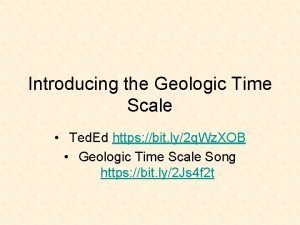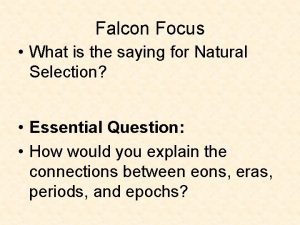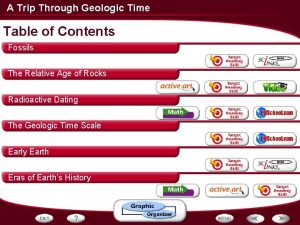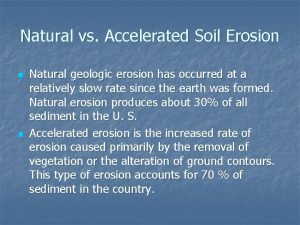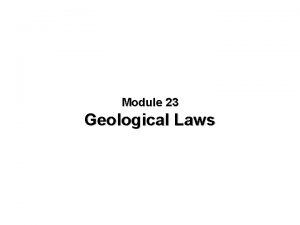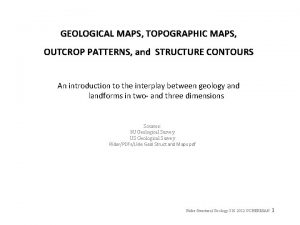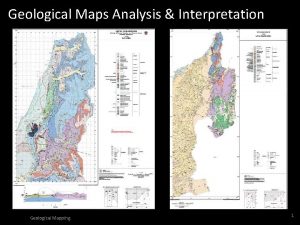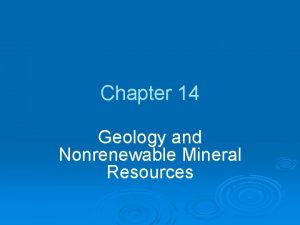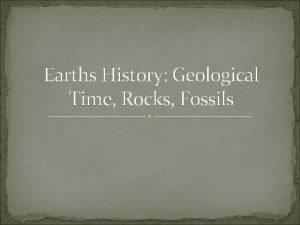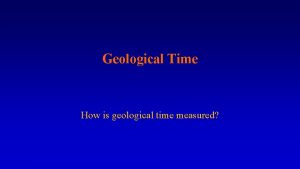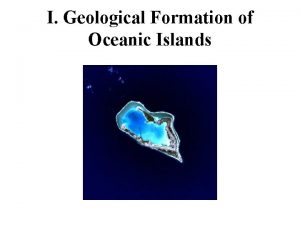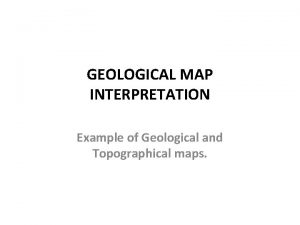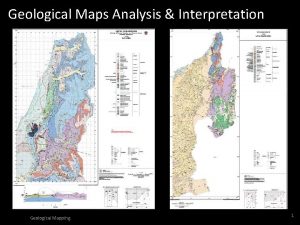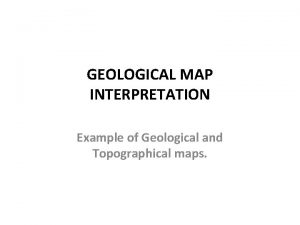A Walk Through Geological Time A Walk Through

















- Slides: 17

A Walk Through Geological Time

A Walk Through Geological Time Directions: 1. Complete your time table by visiting each of the 8 stations. 2. You will have 3 minutes at each station to examine the items and information sheets. 3. Draw pictures of key organisms (2 -3) for each era. 4. Use the highlighters/ pencils to color code your time table.

Your 3 minute timing will be done using the “Era” Song! http: //www. youtube. com/watch? v=SY 3 MZ_w. NFW 8&feature=related When the song ends each time, you will have to move on to the next station, so use your time well!

Precambian Biological: 1. Cyanobacteria 2. Ediacaran organisms 3. bacteria-like organisms Geological: Oxygen and ozone in atmosphere

Precambian 2. Ediacaran organisms

Paleozoic 7. Trilobites , brachiopods, marine invertebrates abundant Trilobytes Invertebrates Brachiopods

Paleozoic 4. Fish dominant 6. First fish appear

Paleozoic 5. First land plants & insects appear

Paleozoic Amphibians 1. Reptiles evolve 2. Amphibians dominant 3. Amphibians appear Early reptiles

Paleozoic Geological Events: Coal swamps form Shallow seas begin to withdraw Appalachian Mountains form

Mesozoic 4. Mammals first appear

Mesozoic 1. Angiosperms appear 2. Birds first appear 3. Dinosaurs are dominant

Geological Events: Rocky Mountains Atlantic & Pacific Oceans forming Pangea breaks up Mesozoic

Cenozoic 1. Mammals are abundant 2. Angiosperms dominant

Cenozoic Geological Events: Alps & Himalayas begin to rise

Answer Key Dates 66 mya – present Cenozoic Era Biological Events 1. Mammals are abundant Geological Events Alps & Himalayas begin to rise 2. Angiosperms dominant Dinosaur Great Extinction 250 mya – 66 mya Mesozoic Era 1. Angiosperms appear 2. Birds first appear Rocky Mountains Atlantic & Pacific Oceans forming Pangea breaks up 3. Dinosaurs are dominant 4. Mammals first appear Mass Extinction 540 mya – 250 mya Paleozoic Era 1. Reptiles evolve 2. Amphibians dominant 3. Amphibians appear Coal swamps form Shallow seas begin to withdraw Appalachian Mountains form 4. Fish dominant 5. First land plants & insects appear 6. First fish appear 7. Trilobites , brachiopods, marine invertebrates abundant 4600 mya – 250 mya Precambrian Era 1. 2. 3. Cyanobacteria Ediacaran organisms bacteria-like organisms Oxygen and ozone in atmosphere

 Graphic organizer of geologic time scale
Graphic organizer of geologic time scale Archean era
Archean era The geological time scale
The geological time scale Geological time scale
Geological time scale Geological time scale with events
Geological time scale with events Geological time scale
Geological time scale A trip through geologic time answer key
A trip through geologic time answer key Continental drift theory and plate tectonics theory
Continental drift theory and plate tectonics theory Roman architecture geological
Roman architecture geological Differentiate between geological and accelerated erosion
Differentiate between geological and accelerated erosion Geological laws
Geological laws J fred muir memorial scholarship in science
J fred muir memorial scholarship in science Geological map sweden
Geological map sweden Factors affecting evapotranspiration
Factors affecting evapotranspiration Geological outcrop map
Geological outcrop map Geological map interpretation
Geological map interpretation Geological processes
Geological processes Dating
Dating



